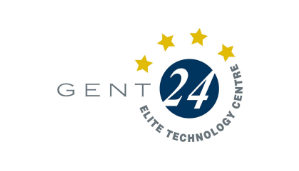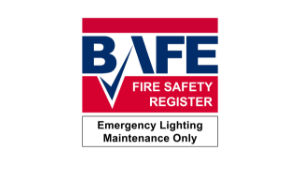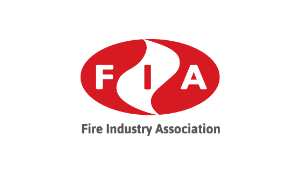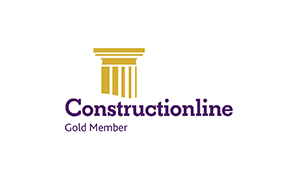Seven years have passed since the tragic Grenfell Tower fire on June 14, 2017. The disaster, which claimed 72 lives, exposed critical flaws in fire safety regulations and building practices, leading to significant changes in the fire safety industry. As we remember the lives lost and the families affected, it is crucial to examine what went wrong and the measures implemented since then to prevent such a tragedy from happening again.
What Went Wrong at Grenfell?
Before we look at the changes made, we need to look at the shortcomings. The Grenfell Tower fire was a catastrophic event that highlighted severe holes in our fire safety standards and while there were many catalysts that lead to that night, the key issues identified by the Grenfell Tower Inquiry include:
Combustible Cladding: The primary factor that exacerbated the fire was the use of aluminium composite material (ACM) cladding. This material, highly combustible, allowed the fire to spread rapidly up the building’s exterior, trapping residents inside.
Lack of Adequate Fire Safety Measures: The building lacked sufficient fire safety measures, such as sprinklers and proper fire doors, which could have slowed the fire’s spread and provided occupants more time to evacuate.
Inadequate Building Maintenance: Poor maintenance practices and substandard refurbishment work contributed to the rapid deterioration of fire safety within the tower.
Ineffective Evacuation Plans: The “stay put” policy, which advised residents to remain in their flats in the event of a fire, proved disastrous as the fire spread uncontrollably through the building’s exterior.
Changes in Fire Safety Post-Grenfell
In response to the Grenfell tragedy, the UK government and fire safety industry have introduced a comprehensive series of reforms designed to enhance fire safety standards and ensure that such a disaster does not occur again. These reforms address various aspects of building safety, from the materials used in construction to the roles and responsibilities of those managing building safety.
Fire Safety Act 2021 and Building Safety Act 2022: The Fire Safety Act 2021 was introduced to provide clarity on the scope of the Regulatory Reform (Fire Safety) Order 2005, specifying that fire risk assessments must include the building’s structure and external walls, including cladding, balconies, and windows. This legislation ensures that responsible persons must manage and mitigate fire risks in these areas, enhancing overall safety (Gov UK) (Building).The Building Safety Act 2022 established a new Building Safety Regulator within the Health and Safety Executive (HSE). This regulator is responsible for implementing and enforcing a more stringent regulatory framework for high-rise residential buildings. The act also introduced a new regime for the design and construction of buildings, requiring developers to gain approval from the Building Safety Regulator rather than local authorities or private building control bodies. This measure aims to ensure higher standards of safety in new constructions.
Fire Safety (England) Regulations 2022: Implementing many recommendations from the Grenfell Tower Inquiry, these regulations require building owners to provide up-to-date building plans and information about the design and materials of external walls to their local fire and rescue services. Additionally, responsible persons must conduct regular checks of fire doors and firefighting equipment, maintain accurate records of these checks, and ensure that fire safety information is readily available to occupants (FIA Safety) (Gov UK).These regulations also mandate the installation of secure information boxes in high-rise buildings, which store essential safety information for emergency services, and way-finding signage to assist in evacuation. For new high-rise residential buildings, the regulations require the installation of evacuation alert systems and a second staircase to ensure multiple escape routes during an emergency (Building).
Banning of Combustible Cladding: One of the most significant changes following the Grenfell disaster has been the ban on the use of combustible cladding materials like ACM in the construction of new high-rise buildings. This ban has been extended to buildings over 11 meters in height and includes various types of residential accommodations, such as hotels, hostels, and boarding houses. The government has also mandated the removal of unsafe cladding from existing buildings, with local authorities empowered to enforce remediation work where necessary.
Increased Responsibilities for ‘Responsible Persons’ and Introduction of ‘Accountable Persons’: The role of the responsible person has been expanded to include regular inspections and maintenance of fire safety equipment, fire doors, and external walls. They must also ensure clear communication of fire safety measures to residents. The introduction of the accountable person role, as defined in the Building Safety Act 2022, places an additional layer of responsibility on those managing high-rise buildings, ensuring that building safety risks are managed comprehensively and transparently.
Golden Thread of Information: The concept of the “Golden Thread” of information is a cornerstone of the new safety regulations. It emphasises maintaining a continuous, transparent record of all building safety information throughout the building’s lifecycle. This includes detailed documentation of construction materials, safety inspections, maintenance activities, and any changes made to the building. The aim is to ensure that all stakeholders, including building owners, managers, and emergency services, have access to accurate and up-to-date safety information (FIA Safety) (Building).
Enhanced Enforcement and Penalties: To ensure compliance with the new regulations, the Building Safety Regulator has been granted increased enforcement powers. These include the ability to impose fines and penalties for non-compliance, conduct regular inspections, and take corrective actions where necessary. This enhanced enforcement framework aims to foster a culture of safety and accountability within the construction and property management industries.
Public and Professional Education: Alongside regulatory changes, there has been a concerted effort to improve fire safety awareness and education among both the public and professionals. Training programs for architects, builders, and property managers have been enhanced to ensure that all parties involved in building design, construction, and management are well-versed in the latest fire safety standards and best practices (FIA Safety) (Gov UK).
These reforms collectively aim to address the systemic issues that led to the Grenfell tragedy, ensuring that buildings are constructed and maintained to the highest safety standards, and that all stakeholders are equipped with the knowledge and tools necessary to prevent such disasters in the future.
Focus on Fire Doors and Digital Fire Safety Solutions
Two critical areas of focus for improving fire safety post-Grenfell are fire doors and the use of digital fire safety solutions. These areas address some of the major shortcomings revealed by the disaster and are essential for ensuring compliance with new regulations.
Fire Doors
One of the most glaring issues during the Grenfell disaster was the failure of fire doors to perform their intended function. A survey conducted in 2021 found that 75% of fire doors across the UK are likely non-compliant, highlighting a widespread issue that needs urgent attention.
Fire doors are a crucial element in preventing the spread of fire and smoke, providing occupants with time to evacuate safely. At CDS, we offer comprehensive fire door inspection and maintenance services to ensure compliance with the latest fire safety regulations. Our services include:
Fire Door Inspections: Regular inspections are essential to verify that fire doors are in good condition and capable of performing effectively during a fire. Our team of experts conducts thorough inspections to identify and rectify any issues with fire doors, ensuring they meet the stringent standards set by the new regulations.
Maintenance and Repairs: Ensuring that fire doors are properly maintained and repaired is vital for their functionality. We offer maintenance services that include repairing or replacing damaged components, adjusting doors for proper fit, and ensuring that all doors close securely and latch correctly.
Pete Halls, Head of Passive Fire Safety at CDS, says: “7 years on and the impact of Grenfell is definitely apparent but there is still so much work to do. it is so vital that Regulation 10 is adhered to. The guidance states that buildings over 11-metres should be checked every 3 months and whilst people are more aware of the importance of Fire Doors, there is still so much work to do to educate responsible persons on this regulation”.
By prioritising the inspection and maintenance of fire doors, we help building owners and managers comply with fire safety regulations and enhance the overall safety of their buildings.
Digital Fire Safety Solutions by Drax Technology
Effective fire safety management goes beyond physical inspections and maintenance; it also involves robust record-keeping and monitoring systems. Our sister company, Drax Technology, provides cutting-edge digital solutions that offer peace of mind to the responsible person by digitally recording all fire alarm events, from false alarms to weekly testing and more recently, we are digitalising fire doors for further robust record-keeping of non-digital assets, too. This ensures that fire safety systems are managed effectively and comply with the latest regulations.
Drax Technology’s key products include:
AMX: This system centralises the monitoring of fire alarm systems, recording all events and providing detailed reports that help responsible persons manage and maintain their fire safety systems efficiently. By centralising data, AMX ensures that all necessary information is readily accessible for audits and compliance checks.
SafeVue: This product offers real-time monitoring and visualisation of fire safety systems, providing immediate alerts for any issues that arise. SafeVue enhances the ability of responsible persons to respond quickly to potential fire hazards and ensures that all fire safety equipment is functioning correctly.
These digital solutions streamline fire safety management by automating record-keeping and monitoring processes, reducing the risk of human error, and ensuring that all necessary actions are documented and traceable. Weekly fire alarm testing is a fall-down we often see with duplicated tests and single devices being prime suspect, but by leveraging these technologies, building owners and managers can maintain high standards of fire safety compliance and be confident in the effectiveness of their fire safety systems.

Our Services
At CDS, we are dedicated to supporting these enhanced fire safety measures through our comprehensive range of services. Here’s how our offerings align with the new regulations and industry best practices:
Fire Risk Assessments: Conducting thorough fire risk assessments is vital for identifying potential hazards and ensuring compliance with the latest regulations. Our expert team performs detailed assessments to help building owners and managers mitigate fire risks effectively.
Fire Door Inspections and Maintenance: Regular inspection and maintenance of fire doors are crucial for ensuring they perform as intended during an emergency. Our fire door inspection services are designed to meet the rigorous standards set by the new regulations, ensuring that all fire doors in your building are in optimal condition.
Digital Fire Safety Records with Drax Technology: Maintaining accurate and accessible fire safety records is a key component of the Golden Thread of information. Our digital solutions, provided by Drax Technology, streamline the management of fire safety records, making it easier for building managers to keep track of safety inspections, maintenance activities, and compliance documentation.
Evacuation Planning: Developing and implementing effective evacuation plans is critical for ensuring the safety of building occupants. Our team helps design customised evacuation plans that align with the latest regulatory requirements, including the installation of evacuation alert systems and wayfinding signage.
Training and Awareness Programs: Increasing fire safety awareness among building occupants and staff is essential for preventing disasters like Grenfell. We offer comprehensive training programs that educate individuals on fire safety protocols, proper use of fire safety equipment, and emergency evacuation procedures.
Third-Party Certifications: Ensuring that fire safety products and systems meet the highest standards is crucial for compliance and safety. We assist clients in obtaining third-party certifications for their fire safety products, providing peace of mind that they are using reliable and effective solutions.
By staying informed about the latest regulatory changes and continuously updating our services, CDS is committed to helping our clients maintain the highest standards of fire safety. The lessons learned from the Grenfell Tower fire have driven significant improvements in the industry, and we are dedicated to playing our part in ensuring that such a tragedy never happens again.


















